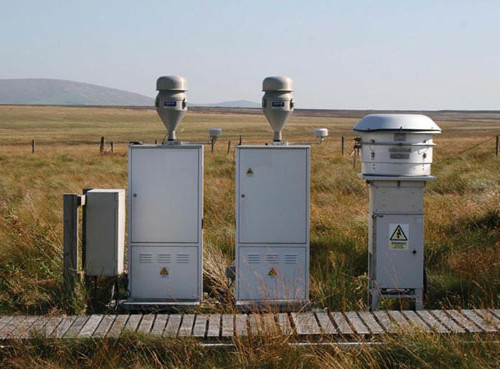Clean air is essential for a healthy and thriving community. However, the air we breathe can be contaminated with various pollutants, some of which pose serious health risks. Ambient air monitoring plays a pivotal role in assessing and maintaining air quality, safeguarding public health, and fostering communities where people can live, work, and play without the fear of harmful air pollution. In this article, we will explore the significance of ambient air monitoring in promoting healthy communities.

The Role of Ambient Air Monitoring
- Identifying Pollutants
Ambient air monitoring helps identify and quantify pollutants present in the atmosphere. Common pollutants include particulate matter (PM), ground-level ozone (smog), sulfur dioxide (SO2), nitrogen oxides (NOx), carbon monoxide (CO), and volatile organic compounds (VOCs). By understanding the types and concentrations of these pollutants, authorities can take targeted actions to mitigate health risks.
- Health Protection
Poor air quality can have severe health implications, especially for vulnerable populations such as children, the elderly, and individuals with pre-existing health conditions. Monitoring air quality allows for the early detection of elevated pollutant levels, enabling authorities to issue health advisories, implement pollution control measures, and protect public health.
- Regulatory Compliance
Many countries and regions have established air quality standards and regulations to limit pollutant levels in the atmosphere. Ambient air monitoring ensures compliance with these standards, holding industries and governments accountable for controlling emissions and maintaining air quality.
- Environmental Conservation
Monitoring air quality is not only about protecting human health but also safeguarding the environment. Contaminated air can harm ecosystems, damage vegetation, and contribute to climate change. Monitoring helps assess the environmental impact of air pollution and supports conservation efforts.
- Data-Driven Policy
Data collected through ambient air monitoring serves as a foundation for evidence-based policymaking. It helps governments and organizations formulate strategies and regulations aimed at reducing air pollution, improving public health, and creating sustainable communities.
- Community Awareness
Ambient air monitoring programs often involve community engagement and education. They raise awareness about the importance of clean air, empower citizens to take action, and foster a sense of shared responsibility for air quality.
Monitoring Methods and Technologies
Ambient air monitoring employs a range of methods and technologies, including:
- Stationary Monitoring Stations: These fixed stations are strategically located in urban and industrial areas to continuously measure pollutant levels. They provide real-time data for immediate action.
- Mobile Monitoring: Mobile units equipped with air quality sensors can monitor pollution levels in different locations, including areas with no stationary stations.
- Satellite and Remote Sensing: Satellites equipped with sensors can monitor air quality on a global scale, providing valuable data for regional and international assessments.
- Passive Sampling: Passive sampling devices collect pollutants over a specific period, allowing for the measurement of long-term exposure levels.
- Sensor Networks: Advances in sensor technology have led to the development of low-cost air quality sensors that can be deployed in communities to create dense networks of monitoring points.
Conclusion
Ambient air monitoring is an indispensable tool for ensuring healthy communities. It serves as a watchdog, protecting people from the harmful effects of air pollution, guiding environmental policies, and fostering a collective commitment to clean air. By monitoring air quality, we can create a future where communities thrive, and individuals enjoy the benefits of a pollution-free environment, free from the burden of air-related health problems.
As technology continues to advance, and our understanding of air pollution deepens, ambient air monitoring will play an increasingly critical role in shaping healthier, more sustainable communities for generations to come.
Frequently Asked Questions
What are some common health effects of air pollution?
Air pollution can cause a range of health problems, including respiratory issues (e.g., asthma, bronchitis), cardiovascular diseases, reduced lung function, and even premature death.
How can individuals protect themselves from air pollution?
Individuals can reduce exposure to air pollution by staying informed about air quality, avoiding outdoor activities on days of poor air quality, using air purifiers indoors, and supporting clean energy and transportation initiatives.
Do different regions have different air quality standards?
Yes, air quality standards can vary by country and region. Some areas may have stricter standards based on local conditions and health concerns.
How often is air quality monitored in urban areas?
In urban areas, air quality is typically monitored continuously, with data updated in real-time. This allows for prompt responses to deteriorating air quality.
Can air pollution have global consequences?
Yes, air pollution contributes to global issues such as climate change and ozone depletion. For example, certain pollutants like black carbon can accelerate the melting of polar ice and snow.







